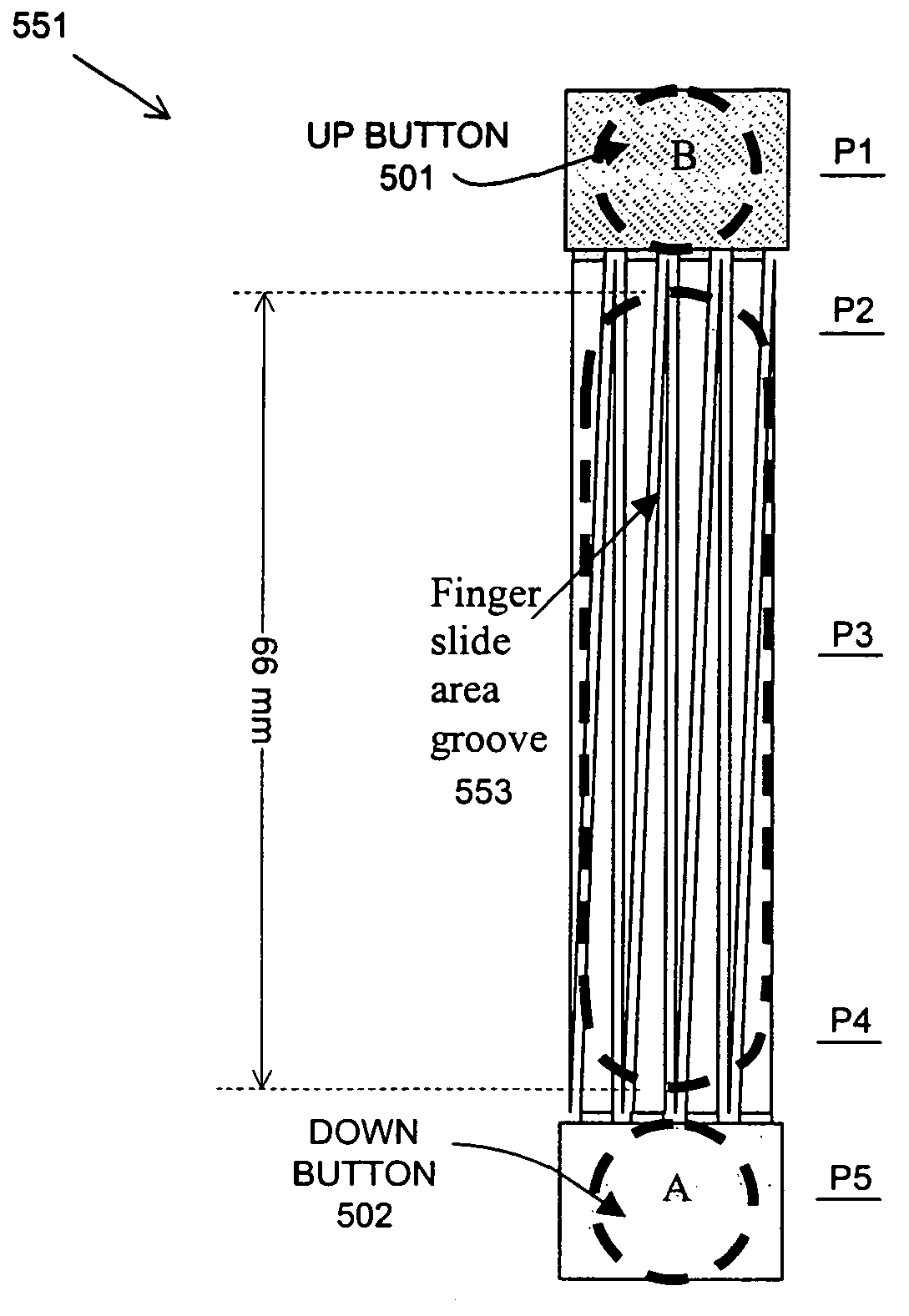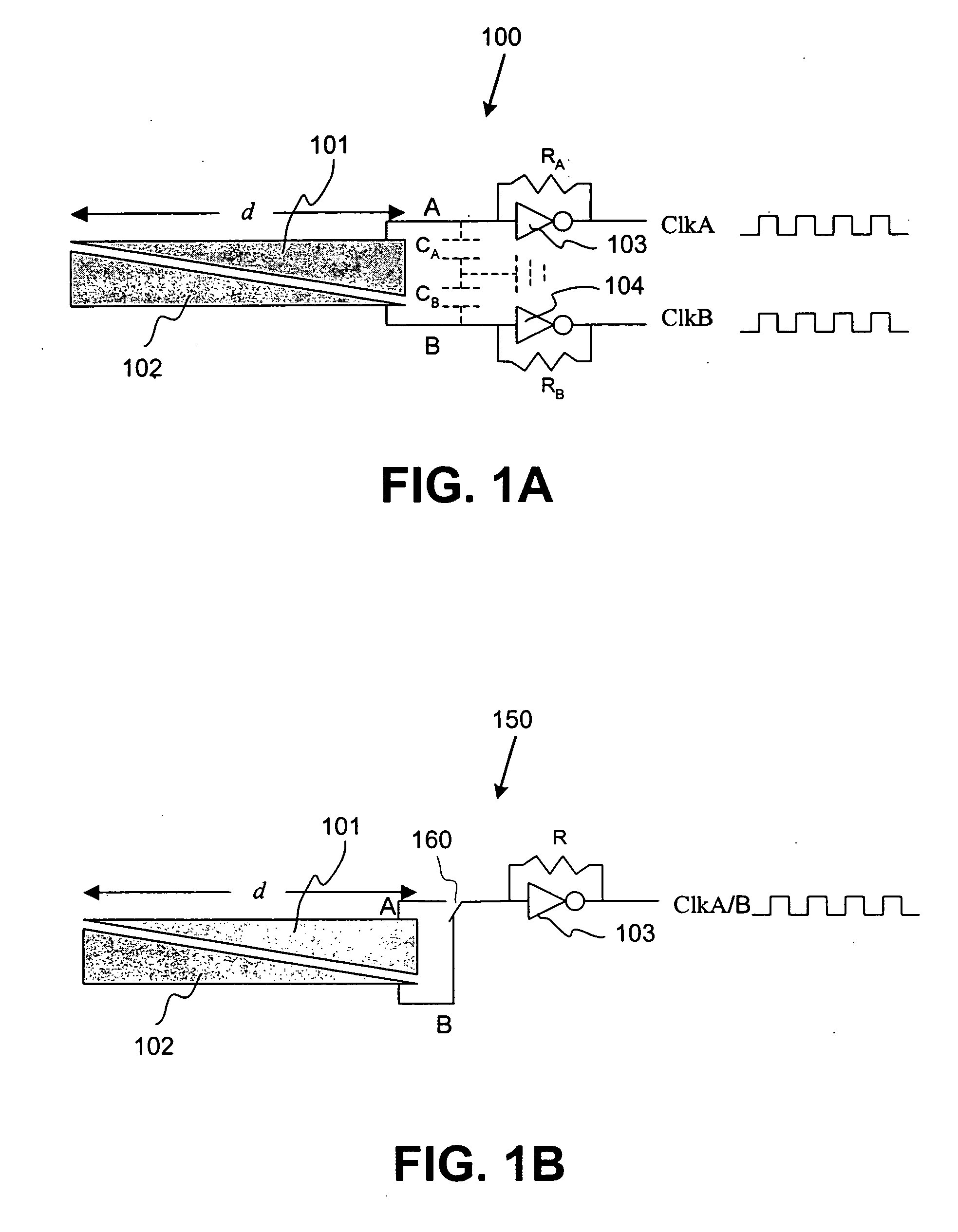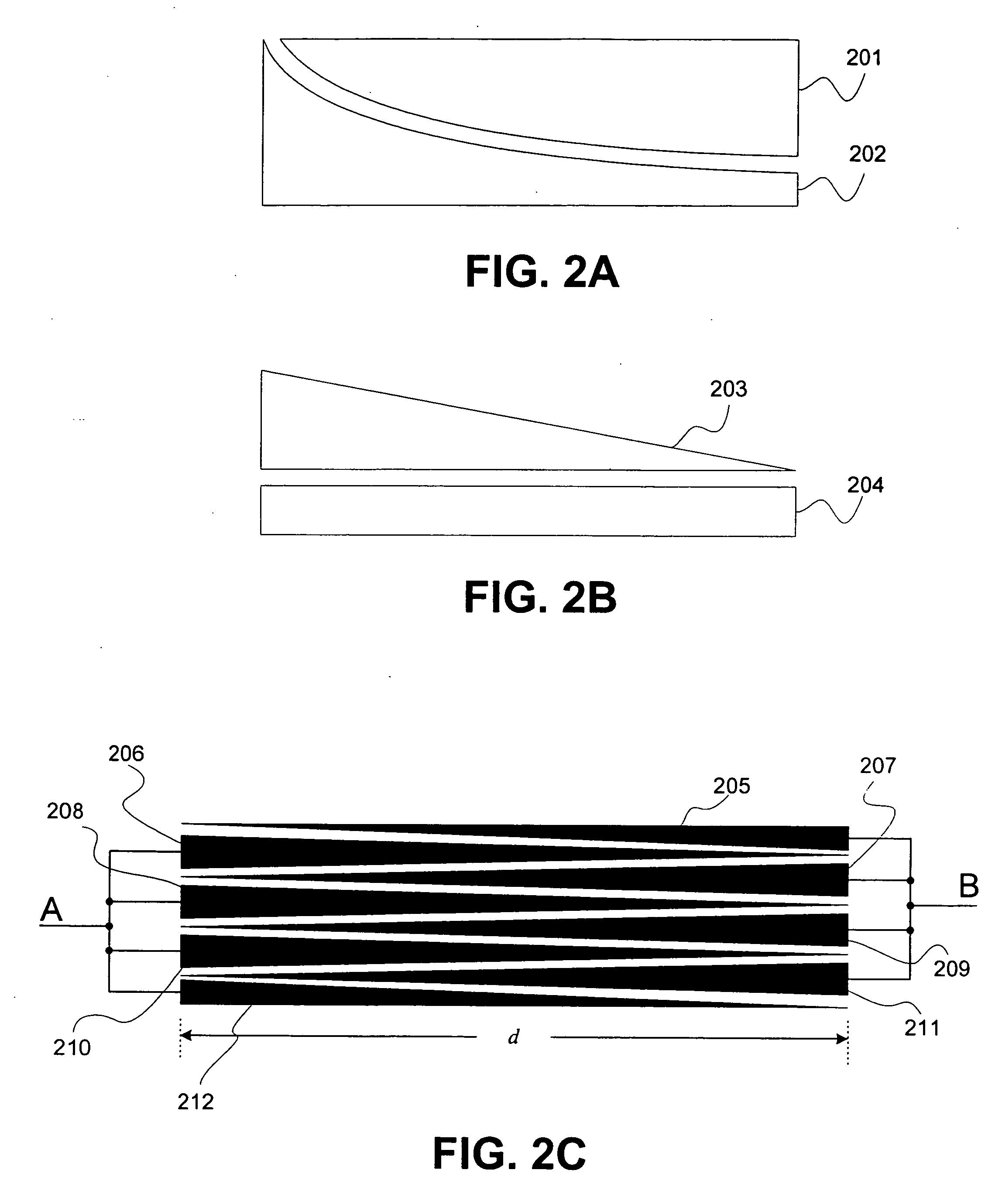Capacitance touch slider
a capacitance slider and touch technology, applied in the direction of static indicating devices, speed measurement using gyroscopic effects, instruments, etc., can solve the problems of not always optimal for controlling scrolling, and not always optimal for mouse us
- Summary
- Abstract
- Description
- Claims
- Application Information
AI Technical Summary
Benefits of technology
Problems solved by technology
Method used
Image
Examples
Embodiment Construction
[0020] Referring to FIG. 1A, an exemplary embodiment of a capacitance touch slider 100 has two capacitive nodes such as conductive plates 101, 102. The conductive plates 101, 102 function to sense the position of, e.g., a human finger, along an axial direction d. As will be discussed below, the conductive plates 101, 102 may be variously shaped, although in the present example each of the conductive plates 101, 102 is triangular in shape.
[0021] To allow the position of the finger to be sensed, each conductive plate 101, 102 may be a capacitive part of a respective different oscillator. In the present embodiment, a first digital resistor-capacitor (RC) oscillator (hereafter called “oscillator A” in this embodiment) includes conductive plate 101 (which provides capacitance), a resistance RA such as from a simple resistor, and an inverter103 preferably of the Schmitt type. Also, a second digital RC oscillator (hereafter called “oscillator B” in this embodiment) includes conductive pla...
PUM
 Login to View More
Login to View More Abstract
Description
Claims
Application Information
 Login to View More
Login to View More - R&D
- Intellectual Property
- Life Sciences
- Materials
- Tech Scout
- Unparalleled Data Quality
- Higher Quality Content
- 60% Fewer Hallucinations
Browse by: Latest US Patents, China's latest patents, Technical Efficacy Thesaurus, Application Domain, Technology Topic, Popular Technical Reports.
© 2025 PatSnap. All rights reserved.Legal|Privacy policy|Modern Slavery Act Transparency Statement|Sitemap|About US| Contact US: help@patsnap.com



